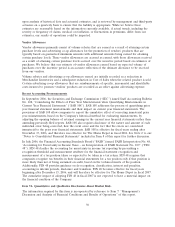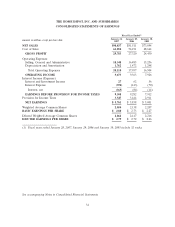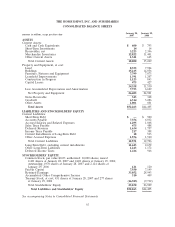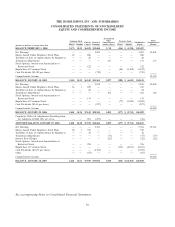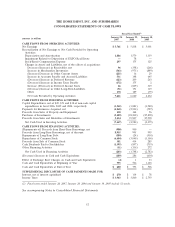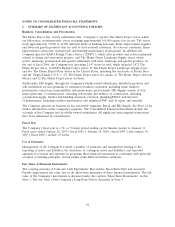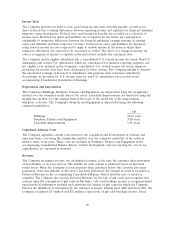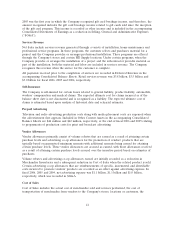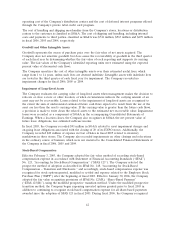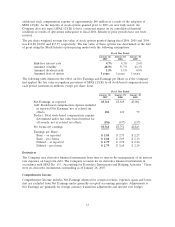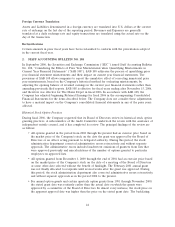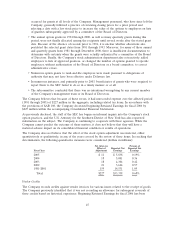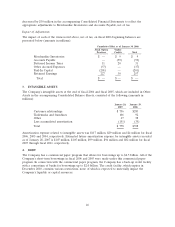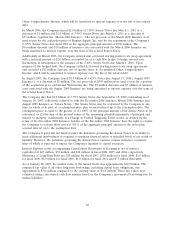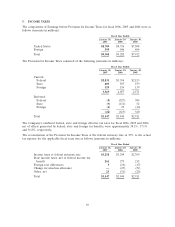Home Depot 2006 Annual Report Download - page 49
Download and view the complete annual report
Please find page 49 of the 2006 Home Depot annual report below. You can navigate through the pages in the report by either clicking on the pages listed below, or by using the keyword search tool below to find specific information within the annual report.Cash Equivalents
The Company considers all highly liquid investments purchased with maturities of three months or less
to be cash equivalents. The Company’s Cash Equivalents are carried at fair market value and consist
primarily of high-grade commercial paper, money market funds, U.S. government agency securities and
tax-exempt notes and bonds.
Short-Term Investments
Short-Term Investments are recorded at fair value based on current market rates and are classified as
available-for-sale. Changes in the fair value are included in Accumulated Other Comprehensive Income
(Loss), net of applicable taxes, in the accompanying Consolidated Financial Statements. The Company
periodically invests in auction rate securities, which are debt instruments with long-term scheduled
maturities and periodic interest rate reset dates. The interest rates on these securities are typically reset
to market prevailing rates every 35 days or less, and in all cases every 90 days or less. Due to the
liquidity provided by the interest rate reset mechanism and the short-term nature of the Company’s
investment in these securities, they have been classified as current assets in the accompanying
Consolidated Balance Sheets.
Accounts Receivable
The Company has an agreement with a third-party service provider who directly extends credit to
customers and manages the Company’s private label credit card program. In addition, certain
subsidiaries of the Company extend credit directly to customers in the ordinary course of business. The
receivables due from customers were $1.8 billion and $865 million as of January 28, 2007 and
January 29, 2006, respectively. The Company’s valuation reserve related to accounts receivable was not
material to the Consolidated Financial Statements of the Company as of the end of fiscal 2006 and
fiscal 2005.
Merchandise Inventories
The majority of the Company’s Merchandise Inventories are stated at the lower of cost (first-in,
first-out) or market, as determined by the retail inventory method. As the inventory retail value is
adjusted regularly to reflect market conditions, the inventory valued using the retail method
approximates the lower of cost or market. Certain subsidiaries, including retail operations in Mexico
and China, and distribution centers record Merchandise Inventories at the lower of cost (first-in,
first-out) or market, as determined by the cost method. These Merchandise Inventories represent
approximately 20% of the total Merchandise Inventories balance. The Company evaluates the inventory
valued using the cost method at the end of each quarter to ensure that it is carried at the lower of cost
or market. The valuation allowance for Merchandise Inventories valued under the cost method was not
material to the Consolidated Financial Statements of the Company as of the end of fiscal 2006 and
fiscal 2005.
Independent physical inventory counts or cycle counts are taken on a regular basis in each store,
distribution center and HD Supply location to ensure that amounts reflected in the accompanying
Consolidated Financial Statements for Merchandise Inventories are properly stated. During the period
between physical inventory counts in stores, the Company accrues for estimated losses related to shrink
on a store-by-store basis based on historical shrink results and current trends in the business. Shrink (or
in the case of excess inventory, ‘‘swell’’) is the difference between the recorded amount of inventory
and the physical inventory. Shrink may occur due to theft, loss, inaccurate records for the receipt of
inventory or deterioration of goods, among other things.
39



